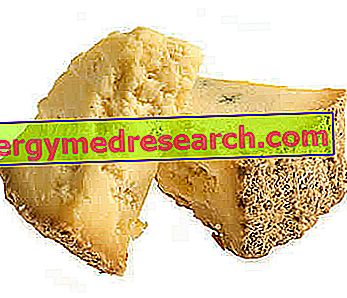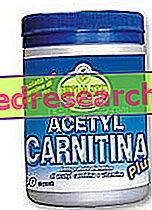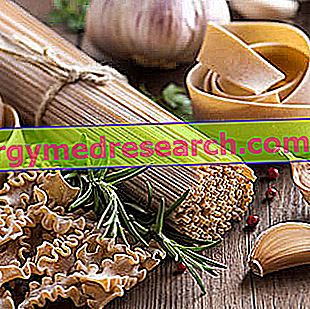What is Castelmagno?
Castelmagno is a typical Italian cheese (from the province of Cuneo), which since 1996 has been recognized as a Protected Designation of Origin (DOP). Historically speaking, Castelmagno cheese as we know it today is at least 300 years old.

Note : the Castelmagno is called "sui generis" blue cheese, since it acquires the marbling only thanks to a prolonged seasoning; the young one is totally without it.
Castelmagno is mainly eaten as a table cheese, although there are also several recipes of local tradition (especially pasta dishes); the recommended wines are the local ones.
Production is strictly regulated by the disciplinary, which guarantees its organoleptic and taste properties.
As for the nutritional aspect, Castelmagno is a fairly fat and rather caloric cheese; it is therefore to be taken with regard to, especially in the case of overweight and metabolic disorders.
To be kept strictly in the refrigerator, it is considered a hygienically safe food but should be avoided in case of pregnancy.
Nutritional Properties
Hygienic aspects of Castelmagno
Castelmagno is a cheese partly contaminated by molds, which give a slight marbling to the dough; similar to Magnun, it has a much lower fungal component than blue cheeses.
From a hygienic point of view, this feature has been the object of many perplexities. For a long time, doctors and food specialists feared that molds could somehow infect humans. On the contrary, the fungal colonies, besides being harmless, seem to protect the cheeses from the proliferation of harmful bacteria. Furthermore, the marbling allows to slightly increase the digestibility of the food (thanks to the hydrolysis of the proteins and triglycerides), but not as much as it happens in the more blue cheeses. This does not mean that, on a statistical level, blue-veined cheeses, muffetted, soft cheeses and stringy cheeses are more frequently affected than Listeria monocytogenes contamination (which probably occurs due to cross-contamination). This bacterium triggers a food infection called listeriosis which - if contracted in pregnancy - can have irreversible consequences on the unborn child or lead to miscarriage.

Nutritional characteristics of Castelmagno
Castelmagno is a very caloric, fat cheese, rich in saturated acids and containing significant amounts of sodium and cholesterol.
The abundance of cholesterol and saturated fat makes it unsuitable for the clinical nutrition of the subject suffering from hypercholesterolemia. An excess of sodium is contraindicated for the treatment of sodium sensitive hypertension.
Too many calories limit consumption, especially in the case of severe overweight.
Castelmagno has a high content of high biological value proteins and a modest concentration of lactose, potentially responsible for gastro-intestinal symptoms in intolerant people.
It does not contain gluten and can be consumed in the diet for celiac disease. It is also a product rich in histamine and should be avoided in case of specific intolerance.
From the mineral point of view, an excellent calcium content is appreciated. As for vitamins, the levels of retinol equivalent (vit A) and niacin (vit PP, not shown in the table) are good.
If produced with vegetable rennet, it is allowed by the lacto-vegetarian philosophy but not by the vegan one.
The average portion of Castelfranco (used as a dish), for a healthy person who consumes it about twice a week, is 80 g (about 330 kcal).
| Castelmagno | ||
| Nutritional Values per 100 g of food | ||
| Protein | 25.6 g | |
| Carbohydrates | <1.0 g | |
| of which sugars | <1.0 g | |
| Grassi | 34.2 g | |
| of which saturated | 24.6 g | |
| of which trans | 2.1 g | |
| Cholesterol | 118.0 mg | |
| Power | 410.0 kcal | |
| Football | 4768.0 mg | |
| Sodium | 6110.0 mg | |
| Vitamin A eq. | 2.4 mg | |
| C vitamin | <1.0 mg | |
Kitchen
Culinary uses of Castelmagno
Due to its organoleptic taste characteristics, Castelmagno is mainly used as a table cheese. In fact, thanks to its intense and characteristic bouquet, it represents a very appreciated dish, alone or accompanied by little honey.
Dissolved, as an ingredient in sauces, it is often used to accompany first courses such as potato gnocchi and crepes.
Conservation of Castelmagno
To ensure a duration of a few days (hardly beyond two weeks), it is advisable to keep the Castelmagno in the refrigerator, in closed containers, or to wrap it carefully in aluminum.
Unlike gorgonzola, it does not lend itself to being frozen in single portion (a system that tends to modify its consistency).
Enogastronomical combination of Castelmagno
Castelmagno can be accompanied by different wines; the choice of one or the other type, as well as according to personal tastes, can vary with the degree of cheese aging or based on other foods present in the recipe or in the meal.
They are suitable to accompany Castelmagno: Cerasuolo di Vittoria, Freisa, Grignolino Giovane, Barbaresco or Nebbiolo d'Alba, Colli Piacentini Gutturnio, Dolcetto d'Alba or Dogliani, Riviera del Garda Bresciano rosso, Roero Rosso and Sangiovese di Romagna.
Description
Description of Castelmagno
Castelmagno is a cheese composed mainly of whole milk (rarely partially skimmed by surfacing), raw, vaccine; the specification provides for no more than 20% of goat or sheep milk.
It has a semi-hard, white paste, tinged with light yellow tending to gold with increasing aging, partially and / or late marbled (it belongs to the so-called "fromage persillé", less contaminated by mold than the more famous classic "blue" as gorgonzola and roquefort).
The Castelmagno crust is thin, light brown, intense yellow or mustard, sometimes darker and more irregular, increasing aging.
It is produced in cylindrical shapes weighing between 2 and 7 kg, with a diameter of about 15-25 cm and a height of no more than 20 cm.
Production
Castelmagno production
Castelmagno, according to the PDO specification, is produced in a geographical area limited to the municipalities of Castelmagno, Pradleves and Monterosso Grana (Cuneo).
It is basically a "mountain cheese", which contains almost exclusively cow's milk, to which you can add no more than 20% of goat's or sheep's milk, coming from two consecutive milkings (morning and evening).

The forms are then broken again and subjected to salting, put into cylindrical molds and pressed to conclude the loss of serum.
From here begins the maturation of 2-5 months in special rooms, consisting of cool and dry cellars or caves, which guarantee the late formation of the bluish-gray veins.
History
Historical notes of Castelmagno
The first written records of the product date back to an arbitration ruling of the thirteenth century, in which the municipality of Castelmagno was required to pay an annual fee to a marquis not in money, but in cheese.
Another totally explicit bibliographic trace, consisting of a procurement order of the king to a feudal lord of the area, dates back to the following century (1700).



